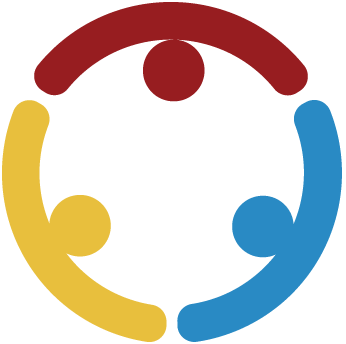Summary
In this activity, students will create an interest board and explore how interests can relate to selecting a degree or program of study at a community college, university, or career tech. This activity will help prepare students for 8th-grade campus visits and encourage them to begin thinking about their interests in order to connect their dreams to a postsecondary education path.
Essential Question
How can my interests influence my postsecondary path?
Snapshot
Introduction
Students identify their interests and personality traits.
Knowledge Building
Students explore the relationship between their interests and skills and the many majors and programs at postsecondary institutions.
Wrap-Up
Students reflect on their learning by making connections between their own interests and future postsecondary options and planning for their next campus visit.
Materials List
Activity Slides (attached)
Interest Board handout (optional; attached; one per student)
Letter Posters (optional; attached)
Character Profiles handout (optional; attached; one per student)
Reflection handout (optional; attached)
Student devices with internet access
Learning Objective
Connect my interests to postsecondary education opportunities.
Introduction
10 Minute(s)
Introduce the activity using the attached Activity Slides. Share the essential question on slide 3 and the learning objective from slide 4.
Display slide 5 and explain to students that an interest board is a collection of ideas that represent their personalities, interests, and abilities. Ask students to go to bit.ly/MyInterestBoard, select the “Use template for new design” button, and log in to Canva. This procedure allows students to have their own templates to use when creating their interest boards.
Explain to students how to use the tools in Canva. Consider opening the template yourself and showing students how to use each tool, especially if this is their first time using Canva.
Once students have accessed the Canva template, direct their attention to the left side of their screens and point out the “Elements” and “Text” tabs. Explain to students that they can use these tabs to add backgrounds, shapes, graphics, text boxes, and more. Tell them that they can use the search bar to find their preferred images, text, and other components.
Show slide 6 and have students create their interest boards. Here, students are asked to share at least one character or personality trait, their favorite subject(s), and at least one interest outside of school. The second page of the Canva activity contains the activity in Spanish.
Knowledge Building
15 Minute(s)
Introduce the Magnetic Statements instructional strategy then display slide 7. Read aloud the three character profiles on the slide while students follow along. Ask the class to indicate which character’s profile and interests are most similar to their own by walking to that character’s poster. For example, if a student identifies most closely with Person A, then they should walk to the poster labeled “A.”
Once students are standing next to their chosen posters, have them discuss their selections with the others at their same posters. Transition to slide 8 and reveal the characters’ areas of study and which type of postsecondary school each one attends.
Repeat these steps using slides 9–12. Pause for discussion and student questions as necessary.
Have students return to their seats and show slide 13. Share the definitions for major and program with students. Explain at which postsecondary institution(s) they would hear each term.
Wrap-Up
5 Minute(s)
Display slide 14 and introduce the What? So What? Now What? instructional strategy. Have students respond to the following prompts on the slide using either the attached Reflection handout or a piece of notebook paper.
What major or program of study do you think is the most closely related to your interests?
Why do you think it is important to study something that is related to your interests?
What question could you ask on a future campus visit?
As time allows, ask for volunteers to share their responses.
Follow-Up Activities
Complete 8th Grade Campus Visit: Connecting Career Dreams to Postsecondary Education during your next campus visit.
Research Rationale
Postsecondary education can be a life-altering experience for students, not just academically but in other ways as well. College graduates tend to have more job satisfaction, jobs that offer a greater sense of accomplishment, more independence and opportunities for creativity, and more social interactions in their jobs than non-college graduates (Wolniak & Enberg, 2019). College graduation increases the chances of employment. Over the last 20 years, the unemployment rate for college graduates has been approximately half of that of high school graduates (Bureau of Labor Statistics, 2022). College helps students develop skills that prepare them for careers in the tech-driven economy, including nonroutine, abstract skills that aid in problem-solving, multitasking, and creativity (Oreopoulos & Petronijevic, 2013).
Resources
K20 Center. (n.d.). Magnetic statements. Strategies. https://learn.k20center.ou.edu/strategy/166
K20 Center. (n.d.). Canva. Tech Tools. https://learn.k20center.ou.edu/tech-tool/612
K20 Center. (n.d.). What? So what? Now what? Strategies. https://learn.k20center.ou.edu/strategy/95
K20 Center. (n.d.). 8th grade campus visit: Connecting career dreams to postsecondary education. Educator Resources. https://learn.k20center.ou.edu/educator-resource/3638
Oreopoulos, P., & Petronijevic, U. (2013). Making college worth it: A review of the returns to higher education. The Future of Children, 23(1), 41–65.
U.S. Bureau of Labor Statistics. (2022, March 9). High school graduates with no college had unemployment rate of 4.5 percent in February 2022. The Economics Daily. https://www.bls.gov.opub.ted/2022/high-school-graduates-with-no-college-had-unemployment-rate-of-4-5-percent-in-febraury-2022.htm
Wolniak, G.C., & Enberg, M.E. (2019). Do “high-impact” college experiences affect early career outcomes? The Review of Higher Education, 42(3), 825–858.


